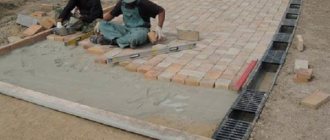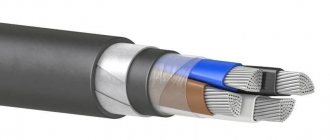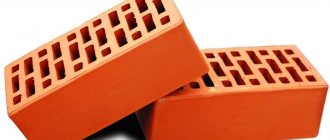Brick is the most popular building material. Any construction site needs a lot of it. Not so long ago, the only way to deliver it to the construction site was to transport it in bulk on vehicles of various carrying capacities. Unloading was carried out by lifting the submersible part.
As a result, the minimum percentage of damage (chipped or broken products) was 20–25%. In some cases, after such unloading, up to 60% of the batch had to be rejected.
As the technology for manufacturing brick products evolved, the issue of its careful transportation, loading and unloading became more and more pressing. Manual work did little to improve the situation, since it took more time and required additional costs. An effective way out of the situation was the use of special containers - pallets for bricks (aka pallets ).
The advantages of this approach to transportation:
- saving time on unloading using forklifts;
- minimum percentage of product damage;
- Brick pallets are convenient at all stages of delivery (loading, unloading, transportation, storage).
Yes, the price of packaging slightly increases the cost of delivering brick blocks. But in some cases, these costs are justified by the almost zero rejection rate.
Pallet design for building materials
A brick pallet is a special container that largely replicates analogues used for transporting food and storing other goods. It can be made of wood or metal, installed on supports, equipped with fasteners for ease of loading and unloading.
The difference from standard containers for storing goods of other categories is:
- in a reinforced structure (some products are made from a combined material - wood and metal);
- special fasteners for special equipment;
- greater weight (taking into account the weight of the pallet and the building material for which it is intended, such pallets are used only for working with forklifts).
The quality is strictly regulated by GOST No. 13843–80 dated January 1, 1981.
Types of pallets for bricks
According to the regulations, the formula for pallets for transporting brick blocks must reflect basic information on the material used in its production (wooden or metal board) and design features. In decoding, the pallet designations look like this:
- P – pallet;
- O – structure equipped with supports;
- K – a product equipped with hooks for easy grip;
- D – wooden shield;
- M – metal container.
According to the classification (described in the interstate standard), all products for transporting building materials are divided into 3 classes (depending on material and design).
- POD is a budget option for a wooden pallet for bricks . In the transcript – a wooden pallet on supports. The best option for transporting individual brick blocks by cars, railway. d. wagons and sea vessels.
- POM is a more expensive, but also more reliable design option. Like the POD, the POM has the form of a flat shield on supports (the letter “O” in the designation). Only it is made of a metal base, which determines the high strength and good load-carrying capacity of the product.
- The most expensive and reliable option is PDKM - pallet made of a wooden base with metal inserts, equipped with hooks for easy loading and unloading of pallets using a forklift. Unlike the first two options, PDKM can only be used for transportation by cars and road trains.
The POD and POM structures are reinforced with cross bars and equipped with triangular stops on the sides for reliable transportation.
We will call you back
Brick pallets
When carrying out construction and repair work, brick pallets ensure safe transportation of material. These are special devices that make it possible to unload, store and transport brick blocks. Pallets (pallets) are produced using a special technology that allows the product to withstand high loads. For reliable delivery, it is also important to follow the rules for laying and securing bricks.
Brick container parameters
Metal and wooden pallets for bricks are made in different sizes:
- The standard option (520x1030 mm) for transporting brick blocks is made of wood or metal material. Designed for a maximum of 750 kg of weight (this is the carrying capacity taking into account the tare weight). The weight of a brick pallet ranges from 20–25 kg and depends on the material used (metal is usually heavier than its wooden counterpart).
- Reinforced structures on supports are designed to bear greater weight. Their load capacity is 900 kg, dimensions are 770x1030 mm. This brick pallet weighs 25 kg (POD) or 30 kg (POM).
- Non-standard containers have an increased size. There are two common options here - brick pallet sizes 750x1300 and 1000x1000 mm. These pallets are widely used for transporting brick blocks in large volumes and products of atypical dimensions. Due to the larger loading area and increased load capacity, a non-standard panel can accommodate more products, but at the same time, working with containers requires highly qualified loaders and increased control when operating special equipment.
Manufacturing technology
Basic requirements for the production of metal pallets:
Sheets of metal for such products must be free of defects.
- Metal sheet: smooth, without defects; cleaned of splashes and slag. Welded joints: neat; presence of a smooth transition. Fastening elements: reliability; use of certain types of steel (mild, semi-mild). Features of coatings: anti-corrosion; fire-resistant; paint and varnish.
Technological features of the production of wooden pallets:
- Wood species: coniferous (at least 3rd grade); deciduous (not lower than 2nd). Requirements for boards and beams: maximum humidity - up to 22%; absence of cracks, chips and other types of defects. Assembly specifics: use of nails; protruding heads; chamfering sharp corners. Additional processing: applying a fire-resistant coating; treatment with paints and varnishes.
Return to contents
Brick laying
There are several ways to stack material on pallets for transportation. The choice of a specific method depends on the type of transport by which the material will be delivered, the number and size of the brick block, the specific location of the construction site and other factors.
The most widespread in modern practice of transporting bricks are two methods of laying - with ligation and herringbone. The first option is simpler, but it has its own characteristics:
- the masonry is done on the edge or with the wide side of the brick block;
- to avoid losses during transportation, a special bandage is used to secure the installation (each row is bandaged);
- In addition to fastenings (fixing brick blocks), the installation is additionally packed in film.
Pallets with bricks laid on a bandage can be transported by containers, cars, sea transport, railway. d. wagons. The herringbone installation method involves placing the material at an angle of 45 degrees. This is a more profitable option, but it requires a high-quality approach to the formation of the masonry (to avoid its scattering or “walking”).
In this case, the brick blocks are stacked in two large columns inclined towards each other. To form a “herringbone”, triangular bars are used.
Advantages of choosing a “Christmas tree” pattern for laying bricks on a pallet :
- a larger number of brick blocks are placed on the shield;
- no need to install additional sides;
- there is no need for auxiliary materials (bandaging, packaging).
What types of pallets are there according to GOST?
These are wooden structures of certain sizes designed for transporting raw materials. Pallets are made from wood and metal, as well as from a combination of wooden and metal parts. Wooden pallets are the cheapest. Used to move goods by all types of transport. Metal pallets with the same characteristics are much more durable than wooden ones. Mixed-type structures are equipped with additional fastenings - hooks, which increases the safety of the cargo during transportation. According to GOST, pallets are made in two sizes:
- 770x1030;
- 520x1030.
Pallets with the following characteristics are not used:
- cracks in beams;
- deformation of fastenings;
- violation of the integrity of the structure.
Brick laying methods
To reduce brick breakage, it is stacked on pallets in a herringbone pattern at an angle of 45°. This method of laying edges reduces pressure on the lower layers of products.
Another way of laying is in a dressing. For this type, additional dressing tapes are used. Herringbone laying is considered preferable because... During transportation, the material does not spill out of the blocks; more bricks fit on the pallet. The placement of building materials depends on its shape and physical characteristics (weight). The container should contain the maximum amount of material with minimal risk of damage.
Number of bricks on one pallet
Compliance with the standards for the number of bricks in a pallet is of great importance for two reasons:
- violation of transportation conditions can lead to damage to both the material itself and the container;
- Due to the excess weight of one pallet, the load distribution in the cargo part of the transport may be incorrect, and this is already an emergency factor.
There is no universal solution for all types of brick blocks: the capacity of pallets depends on their size, weight and type of brick pallet . For standard containers (520x1030 mm), the following standards apply:
- single brick per 1 pallet – up to 420 pieces;
- one-and-a-half brick blocks - up to 309 pcs.;
- double products – up to 200;
- facing bricks – up to 300.
A standard truck (load capacity 20 tons) will accommodate up to 20 pallets. A typical KAMAZ without a trailer can hold 10 pallets; the trailer can accommodate the same number of panels (in total, the same 20 pallets as in a truck). In the back of a regular van (Gazelle), you can transport 1 pallet per trip, regardless of how many bricks fit in the pallet.
Transporting bricks
Despite the positive experience of using metal and wooden containers, the traditional method of transporting building materials in bulk is still used. Although brick packaging is becoming increasingly popular.
Depending on the type of brick blocks, their transportation with or without pallets is carried out in one of two ways:
- Direct delivery from the supplier (manufacturer) by pallets or in bulk. In the latter case, a manual disassembly and stacking method is used at the unloading site. The volume of the ordered batch immediately includes the percentage of losses during transportation.
- Moving in a production or construction site using crane equipment, careful delivery, used mainly for expensive types or when using decorative material.
5 rules for transporting brick blocks on pallets.
- Laying according to technology. It is important to immediately decide on its method, taking into account the characteristics of the building material.
- Expert approach to loading. It is necessary to immediately prevent the risks of warping or falling of products (rafters, tiebacks).
- Choosing suitable transport. The best way to deliver by pallet is by road or rail. d. transport.
- Preparing the cargo compartment (stability of pallets under bricks ).
- Automated unloading. Receiving pallets using a forklift is the safest option.
Where can I get wooden or metal containers for bricks? The easiest option is to order them separately or together with building materials. Many brick block manufacturers include the cost of pallets in the order price. Such cooperation is also beneficial because suppliers accept used pallets back after unloading.
Transportation rules
transportation rules
The process of supplying brick products can be divided into four operations:
- Assembling bricks.
- Loading works.
- Transportation.
- Unloading.
Each of these operations has its own rules and features that must be followed.
Assembling bricks. Performs according to the method provided by the technology. To ensure that the blocks do not move during transportation, it is necessary to properly bandage the rows. In this case, good stability of the assembled stack will be ensured.
Loading work . They must be carried out with extreme caution, because during the movement the pallets may become distorted and overturned. This will undoubtedly lead to damage to the material. During loading, equal tension on the rafters must be ensured to ensure balance is maintained. During the loading process, special grabs are used. For POD and POM, a fork lift is selected, and PKDM provides a pincer lift.
Transportation. Can be carried out by any of the declared modes of transport. Complex transportation can be used when, for example, two types of transport are used - rail and road. Brick blocks can only be transported on on-board vehicles with the appropriate carrying capacity.
Unloading . Construction facilities are required to provide special areas for unloading and storing materials. They are equipped with mechanized devices for loading and unloading operations. Cranes must have proper equipment corresponding to the lifting capacity. For this purpose, a special grip is provided for a pallet with bricks. Work should only be carried out by qualified specialists. The rules for unloading containers are the same as for loading operations. Unloading is carried out one package at a time, and pallets should not be abruptly thrown to the ground. The impact may cause the packaging to break and the bricks to crumble and be damaged. We offer you to watch a video on laying bricks in a pallet:











